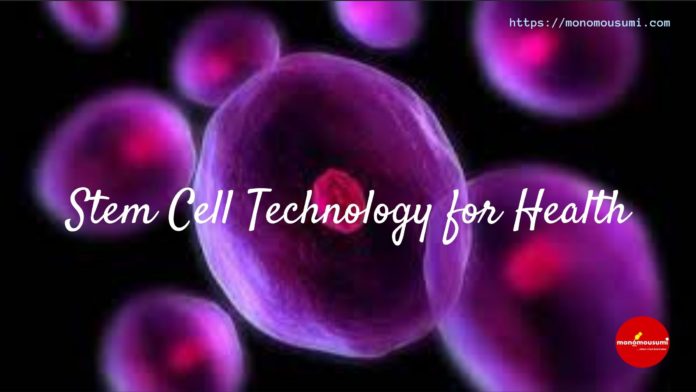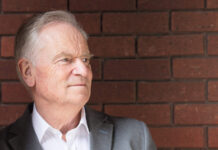Stem cell technology is a fast-evolving science that brings together the efforts of cell biologists, geneticists, and physicians to give promise for the successful treatment of a range of cancers and non-cancerous disorders. Stem cells are totipotent progenitor cells that can self-renew and differentiate into many lineages. Stem cells are good candidates for in vitro modification because they survive well and divide consistently in culture. Although early study concentrated on haematopoietic stem cells, stem cells have been discovered in a variety of locations. Solid tissue stem cell research has not progressed as quickly as hematopoietic stem cells stem cell research. This is owing to the difficulties of replicating the same three-dimensional structures and strong cell-cell and cell-extracellular matrix connections found in solid organs. On the other hand, tissue stem cells are excellent for cell replacement treatment because of their capacity to integrate into tissue cytoarchitecture under the direction of the host microenvironment and developmental signals. The current research and clinical status of therapies based on haematopoietic and tissue stem cells are briefly discussed in this review.
Due to their ability to regenerate and mend damaged tissue, stem cells are a fascinating field of medicine. Stem cells and their capability for tissue regeneration are already used in certain contemporary therapies, such as bone marrow transplantation. Transplanting stem cells into a damaged body area and instructing them to develop and differentiate into healthy tissue are two more treatments under research.
The results of Canadian scientists Ernest McCulloch, James Till, and Andrew J. Becker at the University of Toronto in the 1960s sparked research into stem cells. Hematopoietic stem cell transplantation, originally done in 1958 by French oncologist Georges Mathé, is the only established medical therapy employing stem cells as of 2016. However, human embryonic stem cells have been cultured and differentiated since 1998. Isolating these cells has been a contentious procedure since it usually necessitates the demise of the embryo. In certain European nations and Canada, sources for isolating ESCs have been limited, but others, such as the United Kingdom and China, have encouraged the study. Somatic cell nuclear transfer is a cloning technique that may be used to generate a cloned embryo for use in stem cell treatment with its embryonic stem cells. Shinya Yamanaka led a Japanese team that identified a way to turn adult body cells back into stem cells in 2006. Induced pluripotent stem cells were the name given to these cells.
Theodor Boveri and Valentin Haecker created the term stem cell in the late 1800s. Artur Pappenheim, Alexander Maximow, and Ernst Neumann were pioneers in the hypothesis of blood stem cells around the turn of the twentieth century. Ernest McCulloch and James Till of the University of Toronto initially identified the key characteristics of a stem cell in the early 1960s. They pioneered work in mice that led to the discovery of the blood-forming stem cell, the hematopoietic stem cell (HSC). McCulloch and Till started a series of studies in which they injected bone marrow cells into irradiated animals. The number of bone marrow cells injected resulted in lumps in the spleens of the mice, which were directly proportional to the number of cells injected. Each colony, they theorised, was a clone derived from a single stem cell. McCulloch and Till, along with graduate student Andy Becker and senior scientist Lou Siminovitch, established that each lump was formed by a single cell in later research. Their findings were reported in the journal Nature in 1963. Siminovitch was the main investigator for research that discovered colony-forming cells could self-renew, which Till and McCulloch had believed was a crucial distinguishing characteristic of stem cells.
Stem cells, with their unique regeneration properties, provide fresh promise for treating illnesses including diabetes and heart disease. However, considerable research in the lab and the clinic is still needed to learn how to employ these cells for cell-based treatments to cure disease, commonly known as regenerative or reparative medicine.
Scientists may learn about stem cells’ fundamental features and how they differ from specialised cell types by studying them in the lab. In the laboratory, scientists are already utilising stem cells to evaluate novel medicines and build model systems for studying normal growth and determining the origins of birth abnormalities.
Stem cell research is advancing our understanding of how an entity grows from a single cell and how viable cells replace damaged cells in mature animals. Stem cell research is one of the most interesting areas of modern biology, yet, like many other rapidly developing domains of scientific investigation, it raises as many scientific problems as it creates new findings.
Embryonic stem cells
An embryo is formed from the very beginning of pregnancy when the sperm fertilises the egg. The embryo assumes the shape of a blastocyst, or ball of cells, 3–5 days after a sperm fertilises an egg. The blastocyst is made up of stem cells that will be implanted in the womb later. Embryonic stem cells are extracted from a 4–5-day-old blastocyst. Scientists generally extract stem cells from excess embryos that arise from in vitro fertilisation (IVF). Doctors at IVF facilities fertilise multiple eggs in a test tube to guarantee that at least one of them survives. They’ll then start a pregnancy with a restricted quantity of eggs implanted. When a sperm fertilises an egg, the two cells join to produce a zygote, which is a single cell. After then, the single-celled zygote begins to split. It is now an embryo. The blastocyst is a clump of 150–200 cells that forms just before the embryo implants in the uterus. The blastocyst is divided into two parts:
- an outer cell mound that will transform into the female organism
- an inner cell mass that will grow into the female organism
Embryonic stem cells are located in the inner cell mass. These cells are known as totipotent cells by scientists. The word totipotent refers to a cell’s complete capacity to grow into any other cell in the body. The cells may be stimulated to produce blood cells, skin cells, and all of the other cell types that the body requires. The blastocyst stage lasts around 5 days in early pregnancy before the embryo implants in the uterus or womb. Stem cells start to differentiate at this point. Adult stem cells can only differentiate into a few cell types, but embryonic stem cells can develop into a variety of cell types.
Mesenchymal stem cells (MSCs)
MSCs are derived from the stroma or connective tissue that surrounds the internal organs and other tissues. MSCs have been utilised to generate new body tissues such as bone, cartilage, and fat cells by scientists. They might one day help to solve a wide range of health issues.
Induced pluripotent stem cells (iPS)
Skin cells and other tissue-specific cells are used to make these in the lab. Because these cells act similarly to embryonic stem cells, they may be beneficial in the development of a variety of treatments. More research and development is, however, required. Scientists start by extracting samples from adult tissue or an embryo to generate stem cells. The cells are then placed in a controlled culture where they will divide and proliferate but not specialise further. A stem-cell line is a collection of stem cells that are dividing and replicating in a controlled environment. For various objectives, researchers manage and distribute stem-cell lines. They have the ability to encourage stem cells to specialise in a certain way. Direct differentiation is the name for this procedure. Until today, growing huge numbers of embryonic stem cells was simpler than growing big quantities of adult stem cells. Researchers are, nonetheless, making good progress with both cell types.
Different Types of Stem Cells
Researchers classify stem cells based on their ability to develop into different types of cells. Embryonic stem cells are the most powerful since they have the ability to transform into any type of cell in the body.
The whole categorization is as follows:
- Totipotent: These stem cells have the ability to develop into any cell type. The totipotent cells are the first to emerge when the zygote begins to divide.
- Pluripotent: These cells have the ability to transform into nearly any cell. Pluripotent cells can be found in the early embryo.
- Multipotent: These cells have the ability to develop into a group of cells that are closely related. Adult hematopoietic stem cells, for example, can differentiate into red, white, and platelet cells.
- Oligopotent: These cells have the ability to develop into a variety of cell types. Adult lymphoid or myeloid stem cells are capable of achieving this.
- Unipotent cells: These cells can only generate cells of the same kind as themselves. They are stem cells, though, because they can regenerate. Adult muscle stem cells are an example.
By Dwinnie Fernandes















